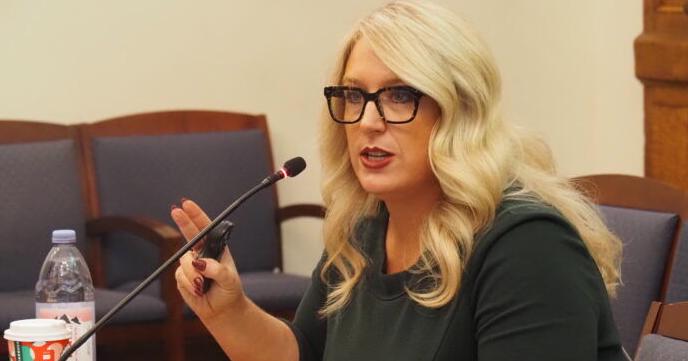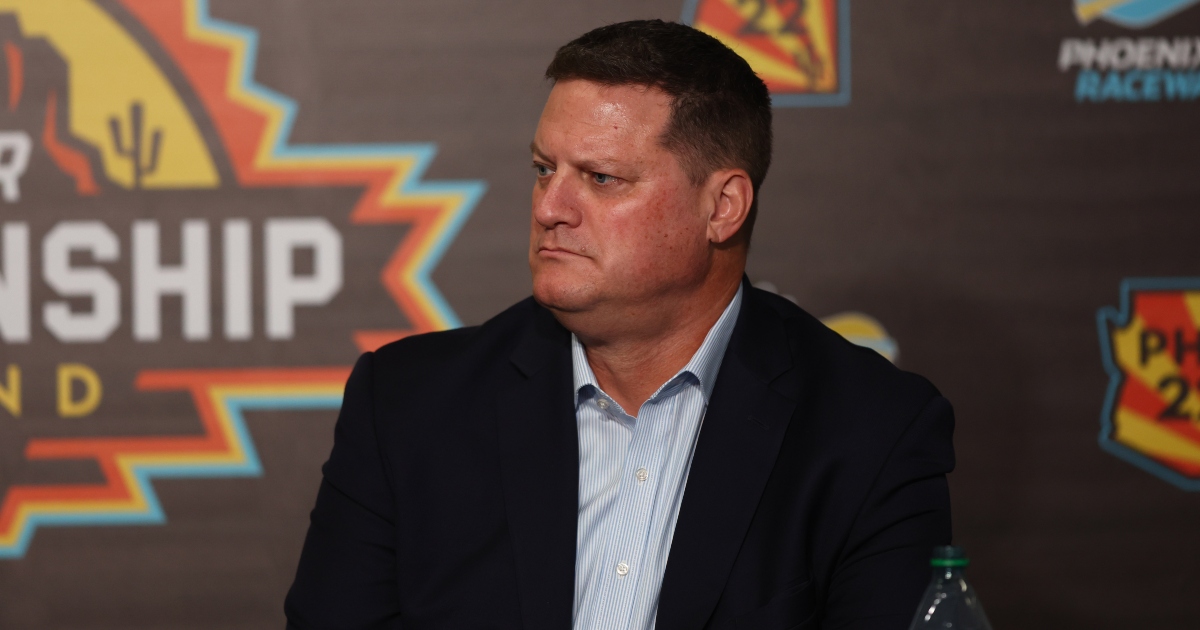
FDA, FTC target diabetes supplement claims supplysidesj.com
source

FDA, FTC target diabetes supplement claims supplysidesj.com
source

When Roger Ebert hated a film, he went straight for the jugular in his review. He was never one for tempering his bad reviews by giving the filmmakers the benefit of the doubt or holding off on harsh criticism because making movies is hard work. Instead, he would concoct a review so scathing and so scabrous that it became a hilarious joy to read. It was like car crash television, but in the written form: you couldn’t look away, even if you wanted to. Amusingly, one of his most damning verdicts was written about a 1997 comedy that he felt contained not one solitary laugh.
The background of this classic Ebert takedown goes back to 1980 when Leslie Nielsen was approached by Jim Abrahams, David Zucker, and Jerry Zucker about starring in their spoof disaster movie Airplane! At that point, Nielsen was best known as a serious actor with a career stretching back to the 1950s. He had lent his particular brand of po-faced gravitas to classic films like Forbidden Planet, The Poseidon Adventure, and The Plainsman, but now he was being asked to turn his talents to comedy.
In a 1993 Fresh Air interview, Nielsen remembered, “They had written something that was just wonderfully dumb and funny. And they knew that if [we] approached their material with the same seriousness and the same gravity with which we approached our police television shows that we were doing, that it would be very funny.”
Airplane! was a huge hit, giving Nielsen a late-career surge as Hollywood’s premiere purveyor of deadpan comedy that peaked with The Naked Gun series. He would play his characters completely straight, blissfully unaware of the ridiculous things happening around them, and the fact that he wasn’t trying to be funny made everything he said hysterical.
Unfortunately, though, after the third Naked Gun movie in 1994, Nielsen’s iron grip as the king of spoofs began to slip. Films like Dracula: Dead and Loving It, Spy Hard, and Wrongfully Accused – which spoofed Bram Stoker’s Dracula, James Bond, and The Fugitive respectively – were critical duds, and only Spy Hard performed respectably at the box office.
In ’97, though, Nielsen’s career nosedive arguably hit its lowest point with Mr Magoo, a big-screen adaptation of a classic ’50s cartoon character. The animation’s main gag, doled out in six-minute theatrical shorts, was that Magoo was a wealthy, near-sighted elderly man whose vision issues constantly led him into comically dangerous situations. Thanks to his uncanny luck, though, he would always emerge unscathed from any perilous encounter, none-the-wiser about how close he came to death.
Translating this short format to feature length would be the main task facing Nielsen, director Stanley Tong and writers Pat Proft and Tom Sherohman – but, according to Ebert, they did a terrible job. Ebert lamented that Nielsen “does an imitation of the Magoo squint and the Magoo voice, but is unable to overcome the fact that a little Magoo at six minutes in a cartoon is a far different matter than a lot of Magoo at 90 minutes in a feature. This is a one-joke movie without the joke.”
While Ebert admitted he was never a fan of the Mr Magoo cartoons, he still expected better from the film, and it let him down at every turn. He raged that the film was “transcendently bad. It soars above ordinary badness as the eagle outreaches the fly. There is not a laugh in it. Not one. I counted.” Most of all, though, Ebert was disappointed in Nielsen’s inability to raise any mirth with the character. However, he did wonder if it may have been impossible for any actor to succeed in such an ill-advised project.
Ultimately, Ebert’s only chuckle in the cinema wasn’t generated by any of the slapstick nonsense on-screen. Instead, he got a good laugh from a disclaimer that closes the film, assuring audiences that Mr Magoo “is not intended as an accurate portrayal of blindness or poor eyesight”. The incredulous critic couldn’t quite believe that Disney felt the need to include such a note, and he let the disclaimer’s writer have it with both barrels.
Ebert concluded: “I think we should stage an international search to find one single person who thinks the film is intended as such a portrayal, and introduce that person to the author of the disclaimer, as they will have a lot in common, including complete detachment from reality.”

Indiana Secretary of Education Katie Jenner addresses state lawmakers during a budget committee hearing on Monday.
Indiana State Health Commissioner Lindsay Weaver speaks during a state budget hearing on Monday.
FSSA Secretary Dan Rusyniak during a budget committee hearing on Monday.
Rep. Ed DeLaney, D-Indianapolis, questions an agency head during budget committee hearings on Monday.
Indiana Secretary of Education Katie Jenner addresses state lawmakers during a budget committee hearing on Monday.
Indiana State Health Commissioner Lindsay Weaver speaks during a state budget hearing on Monday.
FSSA Secretary Dan Rusyniak during a budget committee hearing on Monday.
Rep. Ed DeLaney, D-Indianapolis, questions an agency head during budget committee hearings on Monday.
State agency heads detailed their funding requests before members of the General Assembly this week, claiming victories and minimizing missteps over the last two-year budget cycle.
Indiana’s lawmakers will convene in January to kick-start the 2025 legislative session, which will focus on crafting the state’s next biennial budget. Nine additional departments presented before the State Budget Committee in Indianapolis, building upon the work of other agencies and higher education institutions from November.
Monday’s meeting included baseline budgets, or budget data from the last few years. Budget pitches begin in earnest next month after analysts have time to absorb revenue forecast data, which was scheduled to be presented this week.
The Department of Education traditionally accounts for roughly half of the state’s $44 billion budget – though legislators previously cautioned that projected health care growth threatens that line item.
For the 2024 fiscal year, the agency received more than $9.4 billion from general funds, and estimated a base budget of $9.6 billion moving forward. Nearly all of that funding is funneled to schools in the form of tuition support, a calculation that includes the number of students in a given district with specialized needs that include disabilities, poverty status and English learners.
Katie Jenner, the secretary of education, will hold her position in the next administration and pointed to areas of progress – including small literacy gains and an increase in the average teacher salary – but said more work is needed.
“(Since) the last time I was here, we went up about 20,000 English learner students in Indiana. This is probably the most significant growth we’ve seen in any of our student population points,” Jenner said.
The biggest teacher needs in the state were special education teachers, another growing population, followed by English learner educators, she added.
The highest English learner growth was concentrated in the cities of Indianapolis, Fort Wayne, Elkhart, Goshen, Seymour, Columbus and Logansport, Jenner said. The state doesn’t track student immigration status and has a duty to educate every student, regardless of their citizenship.
But literacy progress among this population and Hispanic students has “plateaued,” Jenner said, and is “one area that I’m very concerned about.”
“Indiana’s literacy rates have been in decline for more than a decade, with the exception of one year. The pandemic, no doubt, exacerbated the literacy crisis,” Jenner said, before pointing to legislation appropriating new funds and dictating new methods of teaching.
Rates have improved slightly in recent years and lawmakers spent much of the last session struggling with how to provide additional supports for students and teachers at minimal cost.
One potential remedy has been increasing funds for summer schools, as documented in budget pitches. Though most students attend the vacation education programming for physical education or health classes, third- and second-grade reading make up the second- and fourth-largest populations, respectively.
This year, the state spent $26.7 million on summer school, with 15.7% of those costs going toward the two reading courses.
Jenner acknowledged the tight budget session coming up and said she would be asking for a budget increase but that the agency also needs to be held accountable.
“Let’s fund what’s working and let’s reallocate where it’s not and put that funding back into what is working,” Jenner told lawmakers.
Rep. Ed DeLaney, D-Indianapolis, sought to get a promise from Jenner that she would press the body for an increase in funding if she needed one, even if such a request went against the wishes of Gov.-elect Mike Braun.
“(T)ell us that your budget is a trim back and it’s not what you want. Tell us what area you want more money for … the betterment of our children. Are you willing to do that?” DeLaney said. “Or will we see what I’ve seen in the past, where every governor-elect’s budget is the ask?”
Jenner said she would work with Braun but said she would tell the General Assembly “exactly what that (budget) number is.”
In particular, DeLaney pushed Jenner to detail potential costs associated with adopting a new diploma – and whether there would be any savings realized down the road.
“We had to think about how to make the four years of high school as valuable as possible for Indiana students,” Jenner responded.
The biggest questions surrounding the Family and Social Services Administration budget pitches for various divisions – including Medicaid, which reported a nearly $1 billion shortfall last year – was expected to be answered this week during a forecast presentation, noted Dan Rusyniak, who leads the agency.
More recently, the agency made news when it implemented another waitlist for child care vouchers after reporting a 40% increase in demand. With federal dollars from the COVID-19 era stimulus packages soon expiring, Rusyniak said the agency would need more funds to support the 75,000 families currently receiving services.
“We estimate we can support around 50,000 of those children in the next federal fiscal year,” Rusyniak told lawmakers.
In the 2024 fiscal year, FSSA received $5.1 billion from the General Assembly and $2.3 billion in dedicated funds, compared to $16.8 billion from the federal government. Medicaid makes up the largest portion of that budget, or $20 billion.
Payments for parents getting child care subsidies average $7,000, Rusyniak said. Eliminating the waitlist would take another $140 million investment from the state, he estimated. Doing that for the waitlist of long-term services for the elderly and disabled would require not only additional funding but some new approvals from the federal government.
The last agency to present its budget pitches for departments promoted itself as asking for no increase “whatsoever,” regardless of additional burdens imposed by the General Assembly.
Attorney General Todd Rokita boasted about his decision to pursue litigation, some of it potentially expensive, including actions against Tik Tok and “federal government overreach.”
Additionally, the office frequently joins sign-on letters and amicus briefs, for a total of 280 this year.
“Defense of your legislation takes a tremendous amount of our time, and we’re proud to defend the laws that you pass,” Rokita said, highlighting abortion restrictions, pornography age verification and the opposition to gender-affirming care, in particular.
Other subdivisions within the office include the Medicaid fraud unit and its pursuit of negligent landlords.
But DeLaney questioned Rokita about his politicization of the office and his decision to join certain suits, such as whether President-elect Donald Trump should appear on the ballot in Colorado or suing the Biden Administration over border control.
“You talk about how you support Indiana’s values, and you’ve sued the federal government over the border, about elections, about the environment, about coal,” DeLaney said. “Who gives you direction? Who calls you up and says, ‘I need this lawsuit brought?’ ”
Rokita responded by saying, “I think, ultimately, as an elected attorney general, I’m elected by the people of the state and, with that, I’m given discretion and authority through that electoral process. … (T)he way I look at my client-attorney relationship is, I am the legal voice for the state of Indiana.”
The costs of some filings are underwritten by contingency fee arrangements, including the case against Tik Tok and another against Google and Pharmacy Benefit Managers. That means outside groups take on the work and won’t receive payment unless they’re successful in court.
DeLaney openly wondered how much the state would save with the incoming Trump administration, which Rokita – an avid fan of the politician – would likely sue less often.
Indiana Capital Chronicle is part of States Newsroom, a nonprofit news network supported by grants and a coalition of donors as a 501(c)(3) public charity. Indiana Capital Chronicle maintains editorial independence. Contact Editor Niki Kelly for questions: info@indianacapitalchronicle.com.
Your browser is out of date and potentially vulnerable to security risks.
We recommend switching to one of the following browsers:

Dementia research is entering a new era as more focus and resources are directed toward finding the right treatments to combat this complex condition.
While much of this search revolves around cutting-edge drugs, it is fascinating to see that potential solutions might be hidden within traditional medicine.
Dementia, a debilitating condition that impacts both cognitive and motor functions, is primarily associated with older adults and is often viewed as an inevitable consequence of aging.
However, it’s not merely the passing of time that triggers its onset, but rather a multitude of complex factors such as genetics, environmental influences, and lifestyle.
There is an urgent need for a therapeutic breakthrough to prevent or at least slow down dementia’s progression, especially as populations worldwide continue to age rapidly.
On the brighter side, a dedicated group of researchers in the Graduate School of Medicine at Osaka Metropolitan University is making promising strides in the search for new solutions.
The research dives into the realms of traditional Chinese medicine, an area rich with ancient knowledge and healing practices.
Their findings are quite encouraging, to say the least, and may hold the key to a revolutionary approach to dementia prevention.
The researchers focused on the dried seeds of Ziziphus jujuba Miller var. spinosa, a type of jujube that is widely used in traditional Chinese medicine.
The team administered hot water extracts of the dried seeds to mice with various diseases — including Alzheimer’s, frontotemporal dementia, Parkinson’s disease, and dementia with Lewy bodies.
Remarkably, the researchers discovered that the treatments resulted in significant restoration of cognitive and motor functions.
Even more intriguing was when these seeds were crushed into a powder form and given to the model mice. The cognitive function of these mice improved to a level exceeding that of the control group.
The effects didn’t stop there. The powders also seemed to suppress cellular aging in older mice and boosted their cognitive functions to match those of their younger counterparts.
Often called sour jujube or spindle jujube, Ziziphus jujuba Miller var. spinosa is a tree that originally hails from East Asia, especially China.
What makes it stand out are its thorny branches and the small, oval fruits that shift from green to a rich reddish-brown as they ripen.
This tree does really well in dry and semi-dry areas and can handle different types of soil and climates, making it super resilient even in tough conditions. Its ability to survive droughts is a big reason why it’s grown in so many different places around the world.
People have been loving Ziziphus jujuba var. spinosa for centuries because it’s so versatile in both cooking and medicine.
The fruits are pretty sour on their own, but when dried, they’re fantastic in teas, desserts, and traditional dishes, adding a unique kick to all sorts of recipes.
Plus, the fruits and other parts of the tree are a staple in traditional Chinese medicine. They’re believed to help improve sleep, boost the immune system, and provide antioxidants, making them a go-to ingredient for herbal remedies that promote overall health and well-being.
Growing Ziziphus jujuba var. spinosa comes with a bunch of perks, both economically and environmentally.
Farmers love that it doesn’t require a lot of maintenance and can still produce fruit even when conditions aren’t perfect, ensuring a reliable harvest.
On top of that, the tree helps prevent soil erosion and improves soil quality thanks to its extensive root system.
This was not the research team’s first successful venture into the world of traditional medicine.
They had previously noted memory and motor function improvements in dementia mice models when using the Hawaiian herb mamaki and the Chinese herb Acorus gramineus.
“The results of our research will hopefully make it possible to develop dementia prevention products that middle-aged and elderly people can take at their own discretion,” said Professor Takami Tomiyama of Osaka Metropolitan University’s Graduate School of Medicine.
Published for review in the journal eLife, the findings mark a substantial leap toward developing vital dementia drugs, drawing from the vast knowledge of traditional herbal medicine.
As researchers investigate traditional Chinese medicine, a promising new frontier is emerging at the intersection of age-old wisdom and cutting-edge science.
Unlike synthetic drugs, which often target specific molecular pathways, herbal remedies typically involve a complex mixture of active compounds that can influence multiple systems within the body.
This complexity poses a challenge for scientific analysis but also offers an opportunity to explore treatments that work in harmony with natural biological processes.
In the case of Ziziphus jujuba seeds, for example, the potential to improve cognitive function without significant side effects has sparked interest beyond academia.
Researchers are increasingly interested in whether these herbal treatments could evolve into widely accessible, over-the-counter supplements for dementia prevention.
If successful, these innovations could provide more affordable, preventive care options to populations at risk of dementia. This could transform the landscape of brain health and aging.
This study from Osaka Metropolitan University represents a pivotal step in that direction, encouraging more scientists to investigate ancient practices that may hold solutions for modern health challenges.
By validating the efficacy of traditional herbs through rigorous testing, researchers are paving the way for a new wave of dementia therapies that bridge the best of both worlds: the depth of traditional knowledge and the precision of modern science.
The study is published in the journal eLife.
—–
Like what you read? Subscribe to our newsletter for engaging articles, exclusive content, and the latest updates.
Check us out on EarthSnap, a free app brought to you by Eric Ralls and Earth.com.
—–

Chinese herbal medicine-derived extracellular vesicles as novel biotherapeutic tools: present and future Journal of Translational Medicine
source

Jondean25
With no race in Southern California for 2025, what plans does NASCAR have to get back to the vital TV market? The Fontana short track remains years away if it will ever be built. So, what can be done in the meantime?
NASCAR remains interested in the Southern California market. It has to. That area is too important to ignore as a major sports series. The Busch Light Clash at the Coliseum was temporarily the fix.
CLICK HERE to go to PrizePicks and use code ON3 to receive a guaranteed $50 once you play $5 in lineups!
In 2025, the Chicago Street Race will finish its third event of a three-year deal. If that isn’t extended, could the Cup Series go somewhere in California? Like San Diego?
NASCAR COO Steve O’Donnell told Adam Stern of Sports Business Journal the sport has, “a number of folks who are interested at looking at NASCAR from a street race [perspective]. … “We are certainly interested in California and the Southern California market, and that will continue to be a focus for us, but nothing to confirm at this point.”
So, that’s a yes, but a no. I’m sure NASCAR would LOVE to have a race in San Diego. The logistics of making it happen are much different. While the Chicago Street Race has grown on locals, there have been criticisms.
Should the Cup Series have a street race elsewhere, those same criticisms would likely arise. Shutting down streets and roads has consequences, even if temporary.
CGD host calls out Ryan Day
Coach rants on outside noise
Notre Dame fans chant 'We want Georgia'
Latest on Georgia QB status for Sugar Bowl
Ranking the athletic departments
By clicking "Subscribe to Newsletter", I agree to On3's Privacy Notice, Terms, and use of my personal information described therein.
The Chicago Street Race is a unique event in NASCAR. Street racing is something that has only ever been done in sports car racing and open-wheel such as F1 and IndyCar. To put stock cars on the streets of Chicago is a big deal.
Speaking with Adam Stern of Sports Business Journal, O’Donnell highlighted the positive parts of the race. However, challenges remain.
“For us, we’re just looking at 2025. It’ll be the third year of a three-year run and each year we’ve wanted to build upon the momentum that we have,” O’Donnell told Stern. “We’ve learned things each and every year – it’s our first street race, a lot of learnings came from that. A lot of weather challenges as well. … We’ve made some tweaks to the event format and continuing to evolve that as well, so we’ll get through the event, see where things are, but concentrating on 2025 and making that event as successful as it can be.”
That doesn’t sound confident for a continued event in Chicago. But that was never the goal. NASCAR wanted to show that it could host a street race first. Now they can take that concept pretty much anywhere that will have them.
CGD host calls out Ryan Day
Coach rants on outside noise
Notre Dame fans chant 'We want Georgia'
Latest on Georgia QB status for Sugar Bowl
Ranking the athletic departments
© 2024 On3 Media, Inc. All rights reserved. On3 is a registered trademark of On3 Media, Inc.